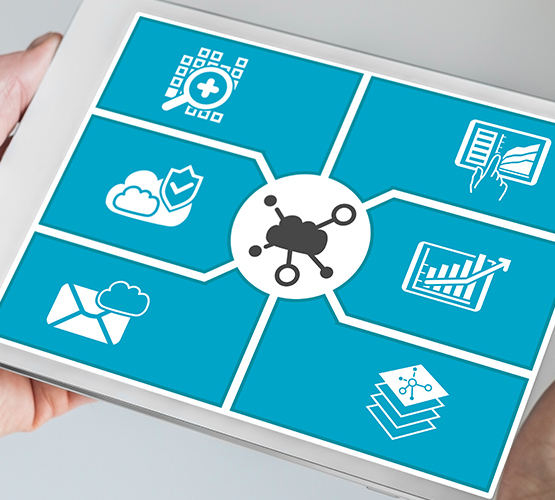Cloud computing is transforming software. It makes systems easier to manage, more reliable, and more affordable. This document introduces cloud computing and its many benefits.
Applications Live in the Cloud
Cloud computing allows users to interact with applications over the Internet rather than with software installed on their local computer or network. They tap into systems run by cloud vendors and don't manage software on their own computers. Accessing information is as simple as browsing the Web from a computer, phone, or tablet. Google.com and Amazon.com are examples of cloud-based services.
Software Becomes a Utility
The core of cloud computing is the concept of "Software-as-a-Service" (SaaS). With SaaS, a software utility company provides applications. Much like electricity is provided by power companies, applications are provided by SaaS companies. Not unlike plugging into an outlet for power, cloud users access software by logging in with their browser.
Like other utility companies, SaaS providers have expert technical staff handling large, centralized, and highly reliable systems. They manage installation, configuration, maintenance, and upgrades. Just as few organizations need their own power plant for electricity, only the largest companies need their own software installation for applications. All SaaS customers access the same utility and benefit from the economies of scale of a large, shared technology infrastructure.

IT Made Easy
Customers' IT staffs no longer install and maintain software with cloud computing. Cloud vendors now manage systems. End users don't run backups, install patches, maintain security, or respond to attempted intrusions. The ease of adding cloud applications means customers don't need to increase IT staff.
Vendors employ staff with specialized knowledge to run software at an optimum level. This is a cooperative effort between employees in technical support (who work with customers), development (who fix any issues and improve the service), and network operations (who manage the infrastructure). Most customers can't build this interdisciplinary team.
Cloud applications are continually updated by the vendor without customer effort. Users always run the latest version of software. With shared infrastructure, patches or improvements for one customer benefit the entire community.
Robust System Are Highly Available
To be an effective utility, cloud vendors build very reliable systems. Designed to be "highly available," these systems have uptime of 99.9% or more. Whether it's being able to take attendance, serve lunch, or locate students, system performance is essential for a seamless school day. Without high availability, systems may go down and disrupt these regular operations.
To build systems with high availability, all electronic components, like computers, routers, and switches, need to be "redundant," or have built-in, idle spare parts. In computing, all hardware eventually wears out and breaks. When a failure occurs within high availability systems, redundant hardware takes over operation for failed components. The overall system continues to function and customers don't experience downtime. Technical staffers repair or replace failed components to re-establish redundancy without interrupting service.
With installed software, customers typically purchase just enough hardware for the system to function. They usually can't afford redundancy, and often don't keep replacement equipment in inventory. When any infrastructure component fails, the system goes down. IT staff scrambles to repair or replace equipment while users wait. Often, the system is down for days or weeks while IT waits for replacement parts.
Subscriptions Simplify Financial Decisions
With SaaS, customers subscribe to software. They pay annual or monthly subscription fees to use existing cloud infrastructure. They don't have to own the software -- they can simply use it.
Traditional software is financially restrictive. To deploy installed software, customers purchase and install hardware and software along with configuring security, backups, and monitoring. High up-front costs and complex setup effectively lock customers into long-term commitments, demanding a leap of faith when choosing a vendor. In contrast, cloud computing customers can switch at any time if the service doesn't meet their current needs.
Cloud computing is budget friendly, as subscription costs are predictable and stable. With traditional software, customers must account for high initial setup costs and variable maintenance costs as hardware and software age. This makes it difficult to budget accurately.
Staffing is also simplified with cloud computing. Districts don't add headcount when implementing systems. When not managing systems, IT staff can do more for schools by addressing other pressing technology concerns.

Customers Are Empowered
Cloud computing shifts the balance of power from vendors to customers, creating more equitable relationships. With revenue primarily coming from subscriptions, SaaS companies need high renewal rates to be successful. Since users can switch products at any time, renewals are best achieved by fostering customer delight.
With installed software, customers pay high startup costs and are effectively committed to products for years. The financial and political costs of switching are prohibitive. Vendors receive a larger portion of all fees up front. Therefore, revenue streams from existing customers are lower. Companies have less incentive to pursue excellent customer satisfaction. Existing customers become less important from a business perspective.
Because SaaS vendors depend on voluntary renewals, they are continuously accountable. To maintain annuity streams, they're responsive to customer needs. Vendors view effective customer service and continuous product development as revenue-generating activities, not cost centers. With user satisfaction a top priority, customers have great influence on product improvement.

Total Cost of Ownership (TCO) Is Reduced
Cloud computing saves money. Customers avoid high up-front software, hardware, and deployment costs. They have lower ongoing costs with reduced responsibilities for IT. When system maintenance fees are accounted for, it's clear that SaaS has a lower TCO than traditional software.
